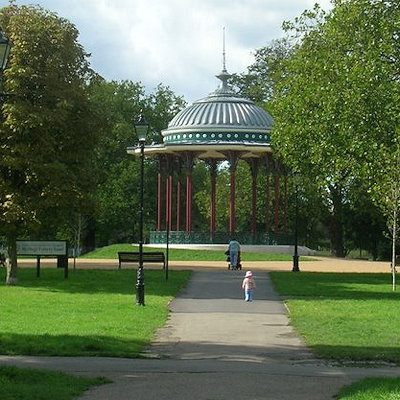
Like us on Facebook
PLACE NAMES


 
|
|
Clapham
|

|
|
|
The present day Clapham High Street is an ancient "diversion" of the Roman military road Stane Street, which ran from London to Chichester. This followed the line of Clapham Road and then onward along the line of Abbeville Road. The ancient status of that military road is recorded on a Roman stone now placed by the entrance of the former Clapham Library in the Old Town, which was discovered during building operations at Clapham Common South Side in 1912. Erected by Vitus Ticinius Ascanius according to its inscription, it is estimated to date from the 1st century.
According to the history of the Clapham family, maintained by the College of Heralds, in 965 King Edgar of England gave a grant of land at Clapham to Jonas, son of the Duke of Lorraine, and Jonas was thenceforth known as Jonas "de [of] Clapham". The family remained in possession of the land until Jonas's great-great grandson Arthur sided against William the Conqueror during the Norman invasion of 1066 and, losing the land, fled to the north (where the Clapham family remained thereafter, primarily in Yorkshire).
Clapham appears in Domesday Book as Clopeham. It was held by Goisfrid (Geoffrey) de Mandeville and its domesday assets were 3 hides; 6 ploughs, 5 acres of meadow. It was located in Brixton hundred.
The parish comprised 4.99 square kilometres (1.93 sq mi). The church, which belonged to Merton Priory was, with the exception of the north aisle, which was left standing for the performance of the burial service, taken down under an act of parliament in 1774, and a new church erected in the following year, on the north side of the common.
Clapham Common comprises 220 acres of green space, criss-crossed by footpaths, with three ponds, a Victorian bandstand and a large number of mature trees, including horse chestnuts and a significant avenue of London plane trees along Long Road. It is overlooked by a variety of buildings, including a number of Georgian and Victorian mansions. It also has Holy Trinity Clapham, an 18th-century Georgian church, important in the history of the evangelical Clapham Sect. Clapham Old Town is a small, affluent area to the north-east of the common, with a mix of architecture including some Georgian, Victorian and Queen Anne. Clapham Town comprises Clapham High Street and residential streets including Clapham Manor Street, home to Clapham Leisure Centre, as well as Venn Street with a cinema, restaurants, and a food market held every weekend throughout the year.
|
 Feel free to Email me any additions or corrections Feel free to Email me any additions or corrections
LINKS AVAILABLE TO YOUR SITE
| |





